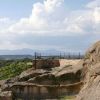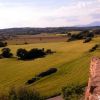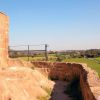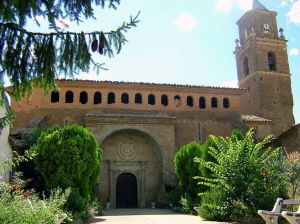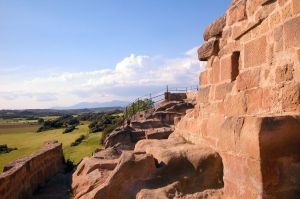Azara has a Moorish past, in common with the neighbouring villages of Abiego, Azlor o Peraltilla and all were conquered by the Aragonese troops of Pedro I in the year 1095. In fact, the name Azara is Arab in origin; Azahra is derived from the Arab word al-Sajra meaning “rock”.
Azara is located on a plain next the canyon of La Clamor; an area that was deeply Islamic. This area is peppered with rock spurs many of which were used to good advantage for the strategic positioning of small fortifications or turrets.
There once stood a Muslim fortress on top of this sandstone outcrop, known locally as Santa Margarita. This formed part of a network of lookout towers that stood between Alquézar and Barbastro (Abiego, Azlor, Huerta de Vero and Castillazuelo) which were built to guard against the Aragonese advance into Somontano territory. Tradition says that these castles and fortifications communicated using bonfires and flags.
As these towers fell into Aragonese hands one by one, the Christians fortified them for their own purposes until the advance eventually concluded with the definitive conquest of Barbastro in the year 1100.
The men of war saw in the landscape a source of economic resources with which to extend their domain and this small fortress was the ideal way of maintaining control of the territory.
The Santa Margarita crag has a relatively small surface area at its peak, which is reached by a series of steps carved from the rock face of the gentler incline. There is a huge tank chiselled from the stone where rain water was stored; it would pour into the tank via a number of carved channels. The actual military construction that occupied the top was square and vaulted and probably served as the base of a tower. The surface is now littered with old fittings for ashlars, fragments of wall and cuts and putlog holes in the rock from which it can be deduced that the castle was finished off with different types of wooden constructions that can no longer be seen.
The fortress was originally designed for a military purpose. The structure and special distribution were designed with the specific aim of carrying out an effective defence against the enemy. At the same time it was necessary to attend to the basic domestic needs for survival, such as food and fresh water.
Although the walls offered a solid resistance it was in fact the scaffold and the wooden structures alongside the walls that provided the best defence and a degree of control. Their height gave greater range to projectiles and provided wider defensive coverage of the immediate environs where other important buildings were located.



